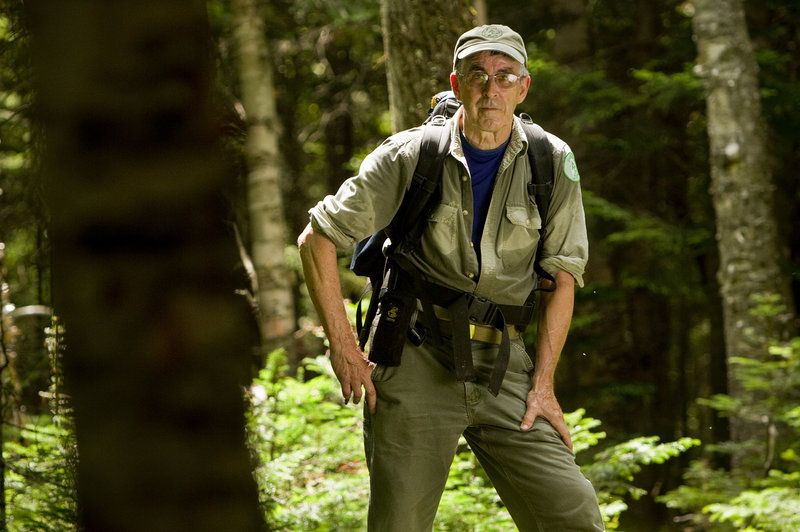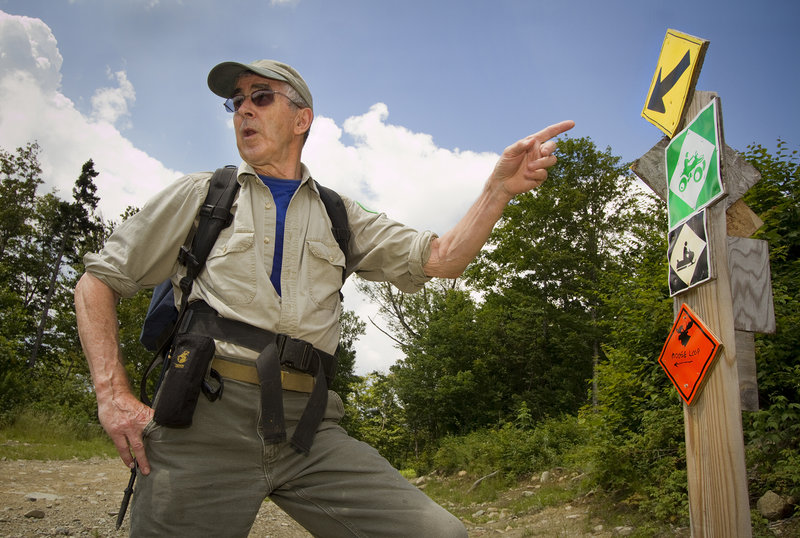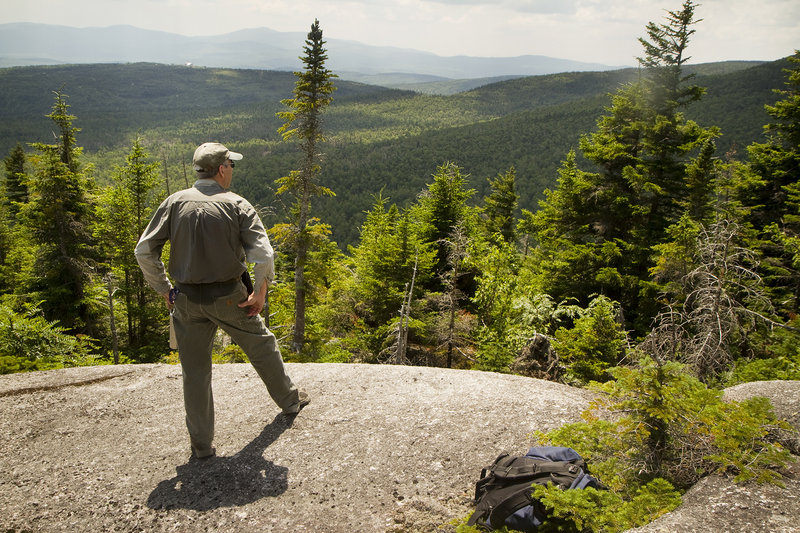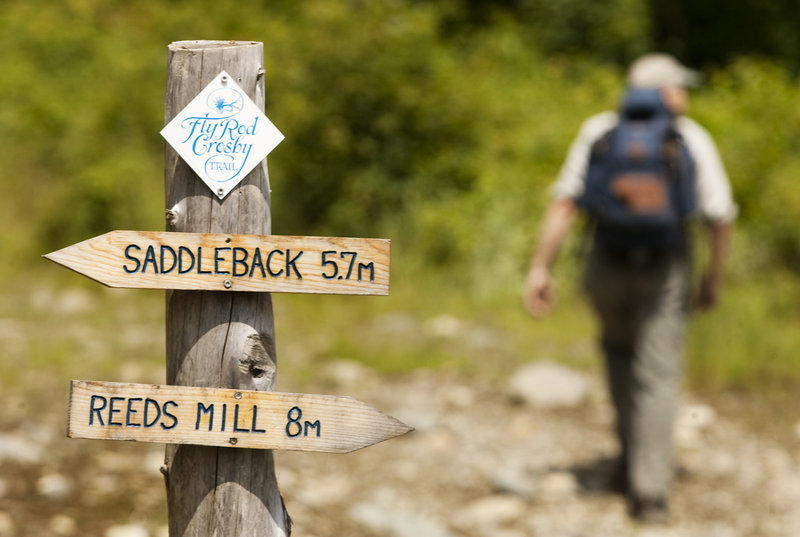MADRID TOWNSHIP – Maine hikers know the name Myron Avery, if not from the Lubec native’s work establishing the Appalachian Trail in the 1930s, then from the 4,088-foot peak in the Bigelow Preserve named after him.
But some believe another Mainer today is taking his place alongside Avery in the hiking annals of Maine, and in the history books about the 2,200-mile AT that runs from Georgia to Mount Katahdin.
David Field of Hampden was inducted into the Appalachian Trail Hall of Fame on June 7 for his work relocating the majority of the 281-mile trail in Maine over the course of some 30 years. During that time Field took the trail off the logging roads where it first ran and put it in the woods.
According to Lester Kenway, the current president of the Maine Appalachian Trail Club, Field is responsible for rerouting much of the trail in Maine, and for taking it up and over 10 mountain peaks here.
“David’s contribution to the final route of the AT is second to no other individual. Avery pursued a dream to connect a trail, and he’d walk down a road 10 miles to get that. Dave was designing a trail that crossed the mountain tops. That was a lot more time-consuming to get done,” said Kenway, a member of the MATC since 1974.
The former dean of the Forestry School at the University of Maine, Field rerouted the trail here over a 59-year career as a volunteer trail steward. The end product? Some of the most challenging and most rewarding hiking along the AT.
“Maine’s 281 miles are generally considered the most difficult of all 14 states,” according to the Appalachian Trail Conservancy in Harpers Ferry, W.Va.
And Maine nearly was excluded from the trail.
But in the 1920s, Avery, a Maine lawyer and explorer, got behind the movement launched by Benton MacKaye to create the trail.
The long-distance trail that was finally completed in 1937 was supposed to end at Mount Washington in New Hampshire, but Avery is recognized for advocating that it end in Maine, on Mount Katahdin.
Myron H. Avery Peak in Dead River Township was named in his honor to celebrate this contribution.
But what Avery did to put Maine on the national trail map, Field did to put the AT in Maine in the woods, away from the roads and high up on the mountain tops.
Kenway said in the 1930s, before the trail was completed, much of it ran on tote roads. And after the river drives ended in the 1970s, many of those dirt byways became gravel, as lumber began to be moved by truck.
“David was involved in what we call the relocation program. He was overseer of the trail in western Maine. And he started scouting, planning, flagging where the relocations were needed,” Kenway said.
To advocate for Maine, Field was a member of the Conservancy board of directors in the 1980s and served as the chair in the early 1990s.
In recent years he collected and cataloged letters related to the history of the AT in Maine from 1927 through 2011. That book, “Along Maine’s Appalachian Trail,” was published last year.
But his greatest contributions were on the ground, literally in the dense woods and on Maine’s mountain summits.
“I can remember walking from Monson to Katahdin in the 1970s, before it was rerouted, and walking on miles of road, as much as a 10-mile section. It was hard on your feet and not very interesting,” Kenway said of the original AT in Maine.
As the dean of the Forestry School at the University of Maine, Field knew many in Maine’s forestry industry. His professional connections helped in his volunteer work.
“Remember all that land was in private ownership. So Dave had to communicate with landowners and obtain their agreement to reroute the trail. But most of the forestry professionals had him at one time as an instructor,” Kenway said with a chuckle. “That was extremely helpful. In fact, I believe it facilitated his work.”
Hiking two weeks ago above the farm fields near his childhood home in Madrid, Field recounted a trail-building and forestry career that spanned nearly six decades. At 72, he is still as nimble and comfortable as he bushwhacks, designs and flags a trail as he was when he hiked here in his 20s.
As he guided along the spur trail he designed this year, a sentimental footpath that he hopes will run along the old berry-picking trail his great grandparents hiked, he hiked with satisfaction.
“My ancestors lived in the next town over. They moved up from Falmouth in the 1820s,” Field said as he hiked just over the ridge line from Saddleback Mountain.
Field hopes this new route will soon be a “blue trail” along the AT, a nice spur trail to offer adventure and magnificent views for hikers from Maine and beyond. At 72, he’s still dreaming of trails that can be built across Maine’s peaks.
“This is a new trail and that’s a neat thing. It will be one of the most rewarding day hikes in the state,” Field said.
Deirdre Fleming can be contacted at 791-6452 or at:
dfleming@pressherald.com
Twitter: Flemingpph
Send questions/comments to the editors.







Comments are no longer available on this story